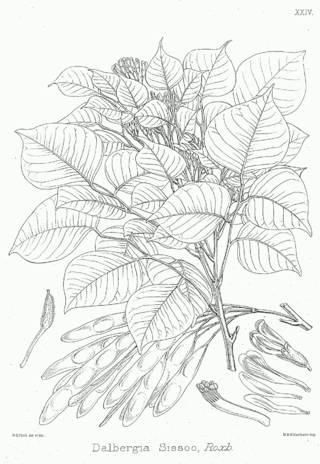Top Qs
Timeline
Chat
Perspective
Simsapa tree
Tree in Buddhist discourse From Wikipedia, the free encyclopedia
Remove ads
The Simsapa tree (Pali: siṃsapā) is mentioned in ancient Buddhist discourses traditionally believed to have been delivered 2,500 years ago. The tree has been identified as either Dalbergia sissoo,[1] a rosewood tree common to India and Southeast Asia, or Amherstia nobilis, another South Asian tree, of the family Caesalpiniaceae.[citation needed]


Buddhist scriptural references
In Buddhism's Pali Canon,[2] there is a discourse entitled, "The Simsapa Grove" (Samyutta Nikaya 56.31). This discourse is described as having been delivered by the Buddha to monks while dwelling beneath a simsapa grove in the city of Kosambi. In this discourse, the Buddha compares a few simsapa leaves in his hand with the number of simsapa leaves overhead in the grove to illustrate what he teaches (in particular, the Four Noble Truths) and what he does not teach (things unrelated to the holy life).[3]
Elsewhere in the Pali Canon, simsapa groves are mentioned in the "Payasi Sutta" (Digha Nikaya 23)[4] and the "Hatthaka Discourse" (Anguttara Nikaya 3.34).[5][6]
Remove ads
See also
Notes
Sources
Wikiwand - on
Seamless Wikipedia browsing. On steroids.
Remove ads
